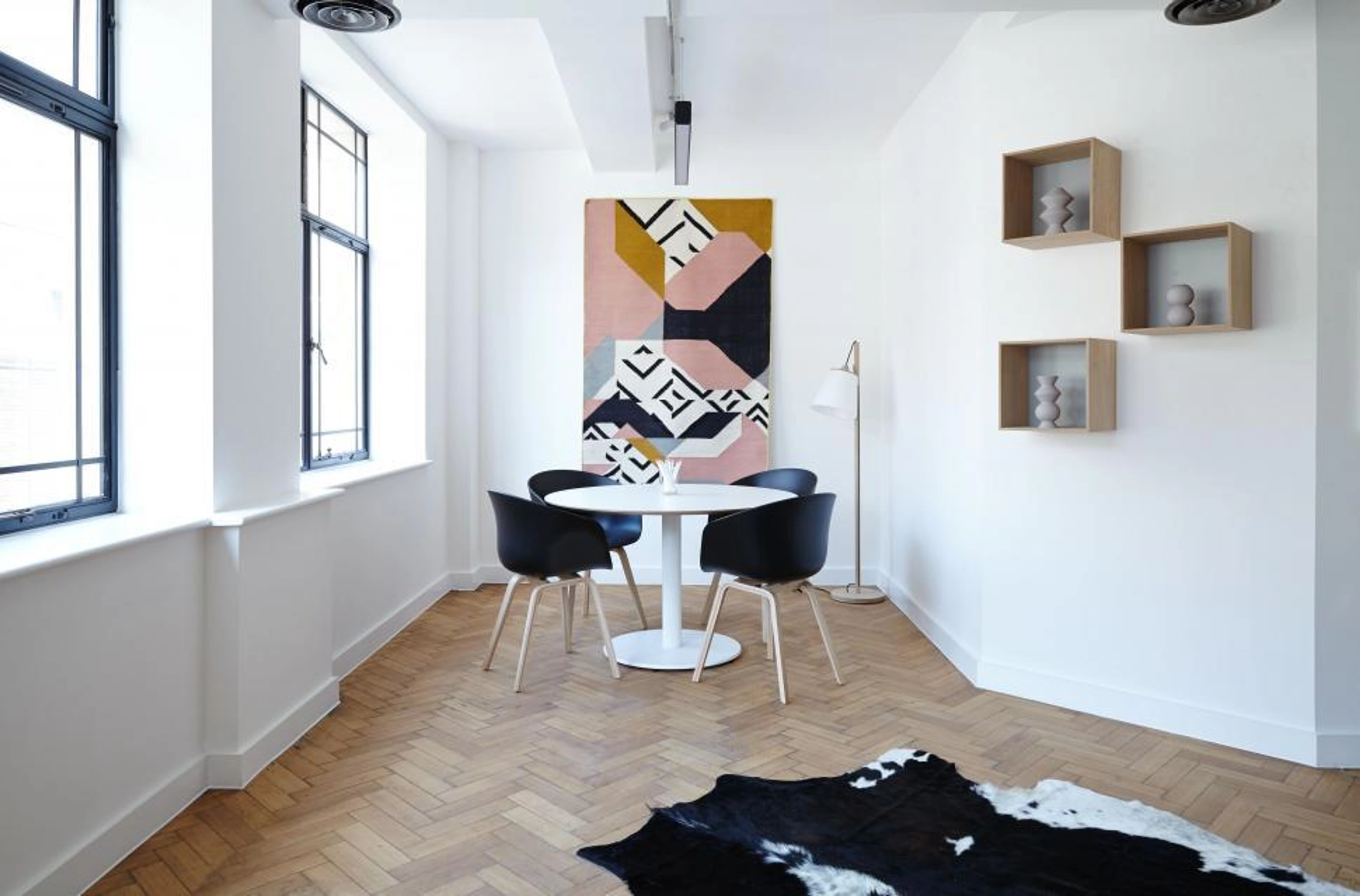
Art for Mental Well-being: Decorating Your Home for Inner Peace
Transform your living space into a sanctuary. An artist-decorator shares personal insights on how art's texture, color, and form profoundly influence mental well-being, offering practical tips for mindful curation.
Art for Your Soul: Decorating for Mental Well-being at Home, Through My Eyes
You know, it’s funny how we often relegate art to the ‘nice-to-have’ pile, a final flourish in an already polished room, almost an afterthought. And honestly, for years, I was just as guilty, focused purely on the 'look' rather than the 'feel.' I chased fleeting trends, ending up with spaces that, despite being perfectly styled, felt utterly lifeless. But if you’re anything like me, you’ve probably felt that visceral shift when the right piece lands in a space, haven’t you? That moment when a room suddenly clicks, or a corner of your home finally feels like yours. It’s more than just aesthetics; it’s a silent whisper to your soul, a subtle but profound influence on how you feel.
This powerful truth truly hit me early in my career, not just in my own evolving space, but with a client utterly overwhelmed by chronic stress. Her home was, well, fine—perfectly functional, tastefully neutral, but utterly devoid of any real personality or warmth. She just wanted it to 'feel calmer.' My immediate thought wasn't about the sofa or the curtains, but those stark, bare walls. I knew we needed to introduce a dialogue with art, something that would speak to her on a deeper level. I remember the day we installed a large, fluid abstract painting with soothing blues and greens in her living room. The moment she stepped back, her shoulders visibly dropped, a deep sigh escaped her, and a soft smile touched her lips. She didn't say much, but her whole demeanor shifted. That’s when it truly hit home: art is therapy, brilliantly disguised as decor. It’s a quiet revolution unfolding right within your four walls, inviting you to create a home that truly nurtures your spirit. This article, then, is my guide, from one art enthusiast (and occasional design-mistake-maker) to another, on how to consciously wield art to transform your home into a true sanctuary for your mind, exploring texture, color, form, and the deeper emotional connections art offers.
The Silent Language of Art: How Texture, Form, and Line Shape Our Mood
Let's think about it for a moment: every piece of art in your home is constantly communicating. Not loudly, thankfully, but it's sending out quiet signals that your subconscious picks up, constantly influencing your emotional state. Art acts as a form of non-verbal communication, bypassing our conscious filters and speaking directly to our emotional core – it’s a profound connection without words. A vibrant, energetic abstract piece can invigorate a room and, in turn, your mood, making you feel more alert and inspired. Conversely, a serene, muted landscape invites calm and introspection, almost like a visual deep breath, a moment of pause in your busy day. This isn't just theory; it’s how art actively shapes our inner world simply by existing in our homes.
And it’s not just the subject matter or overall composition. The very texture and materiality of a piece can draw you in, offering another layer of sensory engagement. Think about the thick, bold strokes of impasto, where paint stands proud from the canvas, almost begging to be touched. That tactile quality can add a sense of robust presence and energy, sometimes even evoking a grounded, earthy feeling. Or perhaps the delicate, transparent layers of glazing, creating a luminous depth that invites quiet contemplation and feels almost ethereal. Even the precise dots of pointillism can mesmerize, transforming individual marks into a cohesive, vibrating image that stimulates focused observation.
Historically, artists have masterfully manipulated texture to evoke specific emotions. For instance, the dramatic, light-catching textures of Baroque paintings were designed to convey grandeur and intensity, contrasting sharply with the smooth, almost invisible brushstrokes of Neoclassicism, which aimed for clarity and idealization. Later, Impressionists used broken brushstrokes to capture fleeting moments and light, creating a sense of movement and softness, while contemporary artists often experiment with unconventional materials to add raw, tactile depth. Texture has always been a powerful, often subconscious, communicator. Beyond these specific techniques, broader artistic movements also leverage these principles: Impressionism for its blurred, dreamlike quality inviting gentle contemplation; Surrealism for its unexpected juxtapositions sparking creative thought; Minimalism for its stark simplicity fostering clarity. All, in their own unique way, contribute to how a piece communicates. I strive to instill profound emotional resonance in each brushstroke, letting those feelings quite literally guide my hand. For a deeper dive, explore the definitive guide to understanding texture in abstract art.
Beyond texture, the specific medium also whispers to us. An oil painting’s rich, buttery surface can feel luxurious and grounded, while a watercolor’s translucent washes might evoke lightness and fluidity. Even a digital print, with its crisp lines and vibrant colors, offers a distinct visual texture and emotional weight. Each medium carries its own unique whisper, its own way of engaging your senses and speaking to your soul.
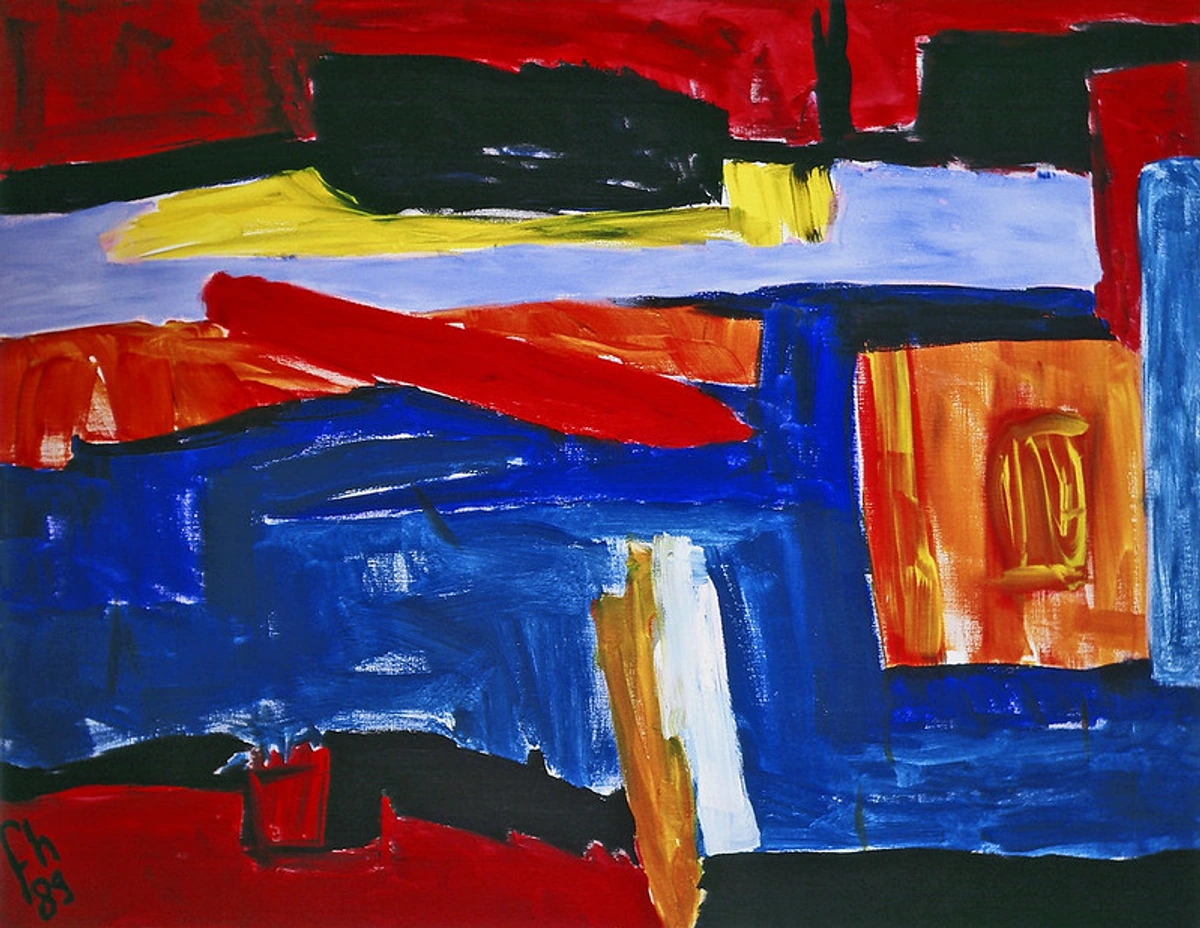
Beyond texture and medium, the scale and proportion of an artwork also play a powerful, often subconscious role. A monumental piece can command a room, creating a sense of grandeur and awe, while a series of smaller, intimately scaled works might invite a more personal, contemplative interaction. It’s about how the art relates not just to the wall, but to the entire room and to you. I've certainly made the mistake of trying to squeeze a commanding piece into a tiny nook, or watching a delicate drawing vanish on a vast wall – it just feels off, doesn't it? And speaking of scale, consider your typical viewing distance: a large, detailed piece might invite close inspection in a gallery, but in your home, its impact changes if you're usually across the room. The art should feel proportional to its surroundings and your interaction with it.
When you bring that kind of art into your home, you’re not just hanging a painting; you’re inviting an emotion, a presence, into your daily life. It’s a very personal interaction, one that can deepen over time, much like a good friendship. What subtle messages is your art sending, and are they the ones you truly want to hear?
Color: The Architect of Emotion and Culture
Ah, color! If art is the conversation, then color is definitely the tone of voice – and oh, what a powerful voice it is! As both a decorator and an artist, I’ve seen firsthand the profound impact of the psychology of color at play. Imagine a room dominated by fiery reds and oranges; it can feel passionate, yes, but also a bit overwhelming, perhaps even anxiety-inducing for some. Now, swap that for soft blues and gentle greens. Instantly, the atmosphere shifts to one of tranquility and peace. It’s not just about the hue itself, but its temperature – warm colors like reds and yellows tend to energize, while cool colors like blues and greens are naturally calming. Think of how a warm sunset glows versus the cool depths of the ocean.
And let’s not forget saturation – how vivid or muted a color is. A highly saturated red might be invigorating, but a muted, desaturated red can feel earthy and comforting, almost like a vintage brick wall. The intensity of a color often dictates the intensity of the emotional response it emits, so it’s not just what color, but how much of its vibrancy you’re inviting in.
Beyond individual hues and their intensity, artists often combine colors to create color harmony, which refers to the pleasing arrangement of colors. Think of it like a well-composed musical chord – pleasing to the ear, and in this case, to the eye. Harmonious color palettes, whether monochromatic (variations of one color), analogous (colors next to each other on the color wheel), or complementary (colors opposite each other), are carefully crafted by artists to evoke a profound sense of balance and visual ease, directly contributing to a feeling of calm or unity in a space.
It’s worth remembering, too, that while many color associations are generally understood, some are deeply rooted in culture. For example, red often signifies passion or danger universally, while blue frequently brings calm or sadness to mind across many cultures. However, what signifies mourning in one society (white in some Asian cultures) might represent joy in another (white for Western weddings). Or consider green, often associated with nature and growth in the West, yet historically a color of envy or even danger in other contexts. A color revered for its spiritual qualities in one tradition might simply be a trendy shade elsewhere – it’s a good reminder that what feels 'lucky' in one culture might just be a pretty hue in another. This is why, while we consider the universal impacts, always let your personal and cultural context guide your choices; what feels right to you is paramount, and your unique experience trumps any general rule.
Beyond cultural impact, colors also have a subtle physiological effect. Studies suggest that certain hues can influence our heart rate, blood pressure, and even metabolism, albeit often subconsciously. Red, for instance, can slightly raise heart rate, while blue can have a calming effect that lowers it. It's a testament to how deeply color is wired into our human experience, not just as a visual phenomenon, but as a biological trigger.
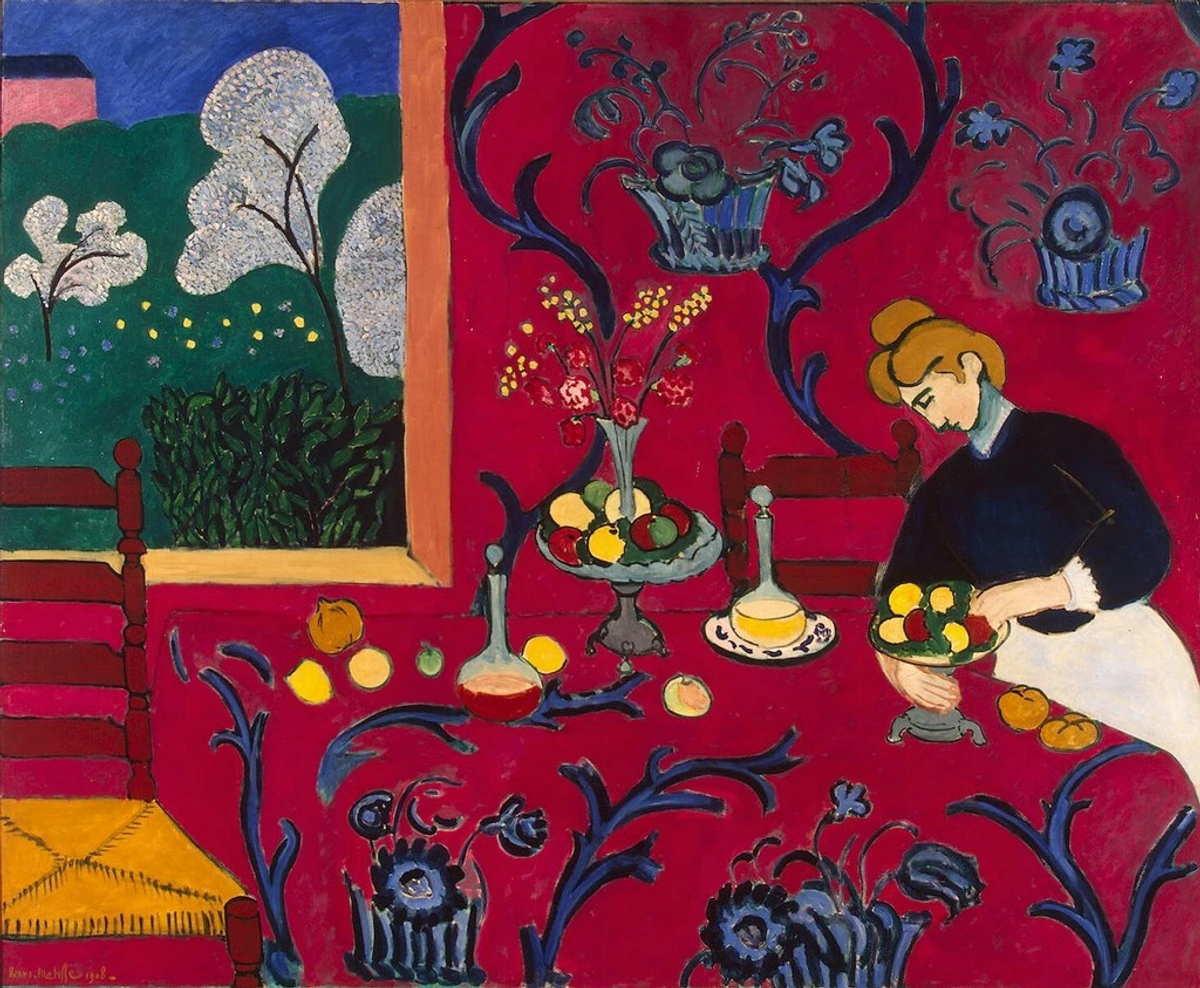
I often think of Matisse’s iconic The Red Room – a powerful example of how color can create an all-encompassing mood. It’s bold, it’s immersive, and it certainly evokes a strong feeling. For a living space where you want to unwind, you might lean towards art that leverages the healing power of color through cooler, softer palettes. Blues can be incredibly calming, promoting a sense of security, while greens connect us to nature, offering a feeling of renewal. Even bright yellows, when used sparingly and thoughtfully, can bring a burst of joyful energy without overstimulating the senses. How does the spectrum of your walls truly reflect the spectrum of your spirit?
Form and Flow: The Subtle Dance of Lines, Shapes, and Space
Beyond color, the actual forms and composition within an artwork play a huge, often overlooked, role in shaping our mood. Jagged, sharp lines might evoke dynamism and excitement, which is fantastic for a creative studio where you want to feel energized – just think of a lively cityscape. But perhaps not ideal for a bedroom where rest is paramount. Smooth, curvilinear forms, on the other hand, can create a sense of fluidity, comfort, and safety, like the gentle curve of a river or a softly rounded pebble.
The Language of Lines
Consider, too, the weight of a line: thick, bold lines can convey strength, stability, or raw power, while thin, delicate lines might suggest fragility, grace, or movement. And the direction of lines matters immensely:
- Horizontal lines often suggest rest and stability, like a calm horizon line, grounding our gaze.
- Vertical lines imply aspiration or strength, reaching upwards like a tall tree or skyscraper, inspiring a sense of grandeur.
- Diagonal lines introduce dynamism and movement, guiding your eye and, by extension, your mind, either pulling you forward or inviting you to linger, adding a sense of energy.
You can learn more about the language of line and how it defines emotion, or take a deeper dive with the definitive guide to understanding line in abstract art.
Shapes, Scale, and Visual Weight
Beyond the lines themselves, consider the scale of forms within an artwork. Large, dominant shapes can create a sense of grandeur and stability, making a bold statement and drawing the eye. Smaller, more intricate details, on the other hand, invite closer inspection, fostering a sense of intimacy and perhaps even curiosity. It’s a delicate dance between the monumental and the miniature, each playing a role in the overall emotional rhythm of the piece – think how a single, powerful brushstroke can anchor a vast canvas, or a collection of tiny, intricate details can draw you into an intimate world.
Another crucial element is balance within a composition, which also contributes to a piece’s visual weight. Just like physical weight, visual weight refers to how much a particular element draws the eye. A large, dark shape on one side of a composition might be balanced by several smaller, lighter elements on the other, creating dynamic tension. A symmetrical arrangement, with elements mirrored, can create a sense of order, formality, and calm, often feeling harmonious and stable. Asymmetry, however, can introduce dynamism, tension, and a sense of movement, providing visual interest and sometimes a more contemporary feel. Both can be incredibly effective, depending on the emotional response you're aiming for.
Even geometric shapes carry their own subtle messages: a circle suggests wholeness and harmony; a square or rectangle, stability and order; a triangle, dynamism and direction. While these shapes offer structure and predictability, the fluid, organic, irregular forms often found in nature or abstract art can evoke a sense of freedom, natural grace, or even delightful unpredictability. They invite a different kind of gaze, less about rigid order and more about unfolding discovery.
The Magic of Perception: Gestalt Principles and Visual Storytelling
Artists intuitively understand how our brains make sense of visual information. This is where Gestalt principles come into play – ideas like proximity (elements close together are perceived as a group) or similarity (similar elements are grouped). For example, if you see three small blue squares and three small red squares, your mind groups them by color, even if they're all equally spaced. These principles are fundamental to how we perceive forms and create meaning, even in abstract compositions, subtly guiding our eye and influencing our emotional response. When a piece achieves a harmonious balance through these visual cues, it feels complete and satisfying, fostering a sense of calm or unity.
And let's not forget the power of negative space, which is essentially the empty or open areas surrounding and between the main elements of an artwork. Just as we need breathing room in our physical lives – whether it's in a conversation or an actual room – negative space in art provides visual calm and clarity. It allows the eye to rest, preventing overwhelm and fostering a sense of spaciousness and peace – a vital element for any tranquil environment. You can learn more about its impact in the role of negative space in abstract art.

Abstract art, in particular, offers a unique opportunity here. Because it lacks a fixed literal narrative, it invites us to project our own interpretations and emotions, offering a wonderfully freeing engagement with our inner world. This direct connection, free from the pressure of deciphering a literal image, can be a deeply meditative process. It truly allows for a dialogue with art that is entirely personal and wonderfully freeing. What visual journey do the forms in your space invite you on?
From Brushstroke to Inner Peace: The Art of Creation and Mindful Being
Now, we've talked a lot about art's impact as a viewer, but for me, the connection runs even deeper, touching on the very act of creation itself. It’s not just about experiencing art; the very act of creating it can be a profound journey for mental well-being. For me, stepping into my studio, brush in hand, is a form of active meditation. It's a sacred space where I can process emotions, explore ideas, and simply be. This intense focus, the delightful puzzle of finding the right balance and harmony in each composition, the tactile sensation of paint on canvas, the unfolding of an image (or abstraction, in my case!) from a blank slate – it’s incredibly grounding, a powerful antidote to stress, fostering self-discovery and emotional processing. I remember one particularly stubborn painting that just wouldn't 'work'; the challenge of finding its balance, shifting colors, and adjusting lines felt like wrestling with my own internal chaos. The eventual breakthrough, that moment of 'click,' brought not just artistic satisfaction but a deep sense of internal peace. It’s where I confront challenges, celebrate breakthroughs, and find a profound sense of purpose. This deep personal journey, reflected in my artist's timeline, infuses the work with an energy that viewers then connect with.
While my own journey is personal, the power of art for healing is also recognized in a professional context. Art therapy, a distinct field, utilizes creative processes to improve physical, mental, and emotional well-being. Unlike simply engaging with art for personal reflection, art therapy is guided by a qualified therapist who uses artistic expression as a clinical tool to help individuals explore emotions, reduce anxiety, and improve self-esteem. This professional guidance differentiates it from a more casual approach, providing structured support for profound psychological benefits. It truly validates the idea that engaging with art, in any capacity, is a powerful tool for nurturing the mind.
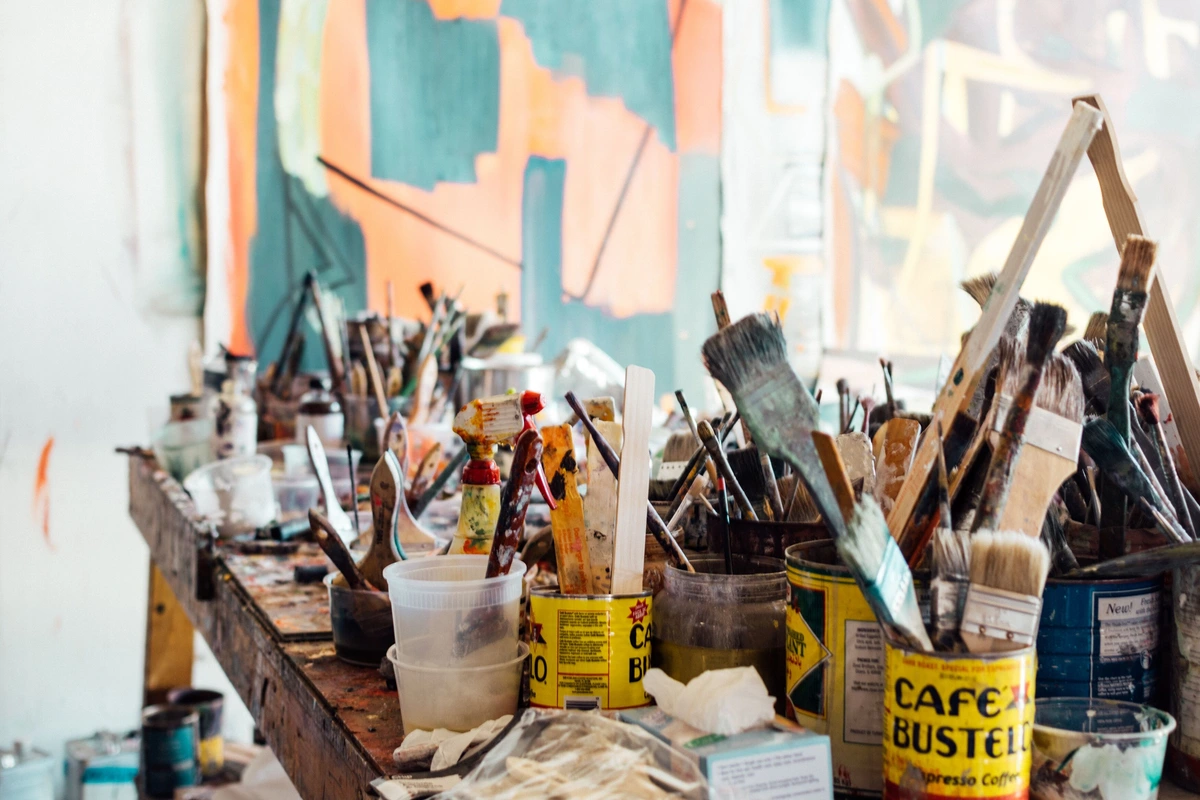
But even if you're not an artist, you can still actively engage with art beyond just hanging it on your wall. Practicing art appreciation as therapy means going beyond a casual glance. It could be journaling about how a piece makes you feel, exploring the emotions it evokes without judgment. Or perhaps engaging in a thoughtful discussion with a friend about different interpretations of an artwork, expanding your perspective. For me, a simple yet powerful practice is mindful observation: taking five minutes to truly see a piece, noticing every detail, every color shift, every line, letting your mind quiet as you immerse yourself in its presence. It’s like a mini-meditation, a quiet anchor in a busy day. Try it: Pick one piece of art in your home today. Spend five minutes truly looking, noticing, and feeling without judgment. What new insights emerge? How can you carve out more moments of artistic engagement in your own life, whether creating or simply 'seeing'? You might even explore mindful moments more deeply.
The Nuance of Feeling: Navigating Art's Emotional Depth
While we often seek art that calms or uplifts, it’s important to acknowledge that art isn't always a lullaby. Sometimes, the most powerful pieces are those that challenge us, evoke introspection, or even stir difficult emotions. Think of a poignant photograph that brings tears to your eyes, or an abstract piece that, for some reason, resonates with a hidden sadness. This isn't necessarily a bad thing at all. Engaging with challenging art can be a profound form of emotional processing, a way to confront feelings in a safe, reflective space. It can foster resilience and a deeper understanding of ourselves and the world around us.
Let's consider, for example, a piece like Wassily Kandinsky's 'Brown Silence' – its title itself hints at something beyond mere prettiness. Or perhaps a stark, minimalist photograph of a desolate landscape. These aren't designed for instant cheer, are they? Yet, sitting with such works, allowing their quiet power to permeate, can be incredibly cathartic. It’s in these moments that art becomes a mirror, reflecting not just the artist's world, but our own complex internal landscapes. I remember once encountering an intensely textured, dark abstract piece that, at first glance, felt unsettling, almost confronting. But the more I sat with it, letting its raw energy wash over me, the more I recognized a deep sense of introspection within it, a space to acknowledge my own complexities without judgment. It wasn't 'joyful' art, but it was profoundly moving and ultimately, healing. Other movements, like German Expressionism, or artists like Frida Kahlo, are renowned for confronting raw, often uncomfortable emotions head-on. Even in contemporary art, artists like Jenny Holzer often use text and public installations to provoke thought and sometimes discomfort, urging deeper societal reflection. Beyond these, consider the stark, unsettling visions of Goya's 'Black Paintings,' or the subconscious dreamscapes of Surrealism – these movements remind us that art can be a powerful vessel for acknowledging the full spectrum of human experience, not just the pleasant parts. Picasso's 'Guernica,' for instance, with its fractured forms and stark black, white, and gray palette, is a powerful evocation of suffering and protest, certainly not 'calming,' but profoundly impactful and thought-provoking.
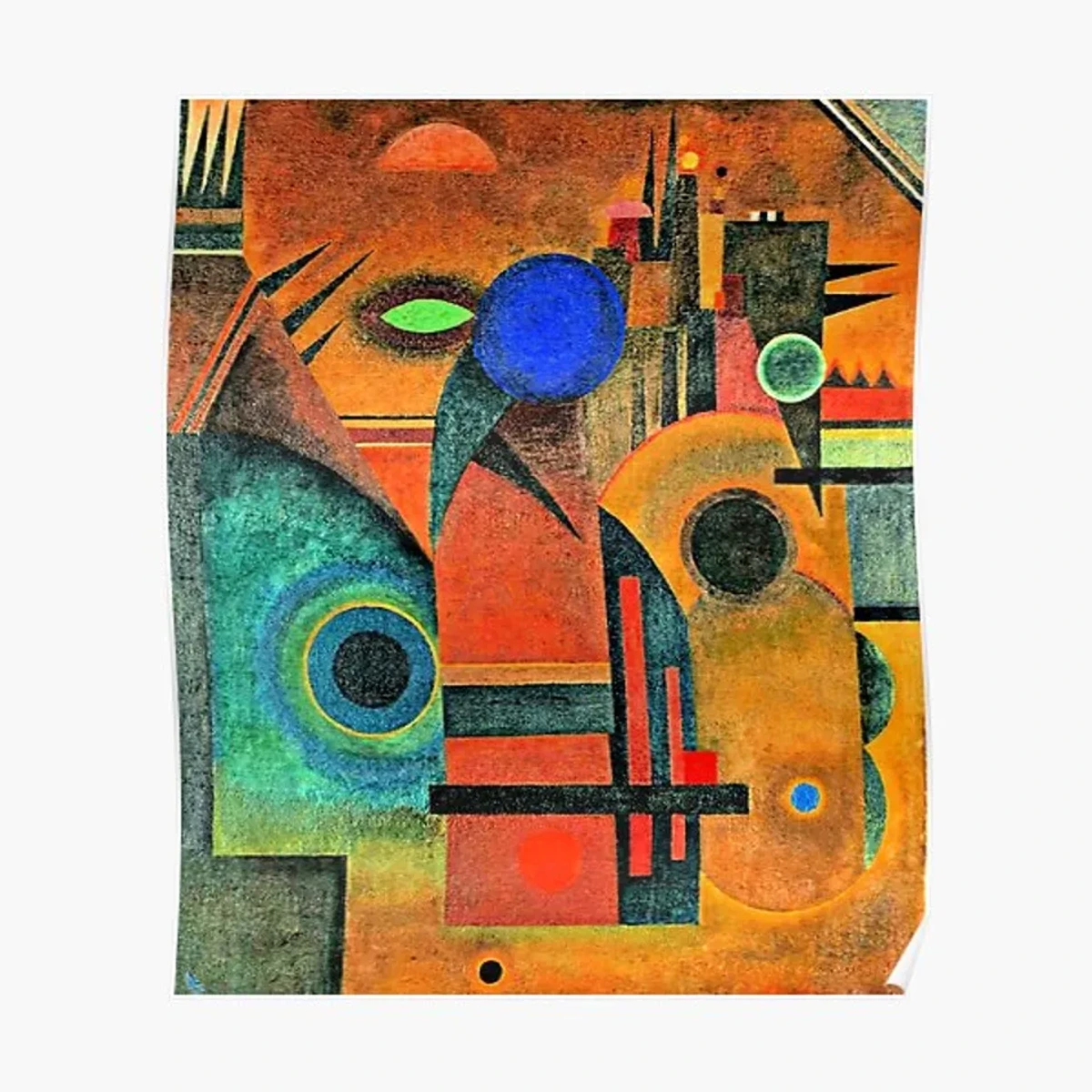
Furthermore, art opens windows into different perspectives, fostering empathy. Abstract art, in particular, by transcending literal representation, invites a more universal, intuitive understanding of emotion. For instance, specific color combinations like deep blues with touches of gold, or fluid, intertwining forms, can evoke a shared human experience of longing, hope, or even quiet contemplation, without needing a literal scene. This can foster empathy, allowing us to connect with feelings and experiences that might otherwise be alien, bridging gaps through shared visual language. This journey into another's (or our own deeper) emotional landscape can be a powerful tool for self-discovery and growth. My own abstract self-portrait, for example, is a personal dive into introspection; for some, it sparks self-reflection, while for others, its colors and patterns offer quiet fascination. The beauty is in that personal, evolving interaction – whether it’s pure joy or quiet contemplation. Don't shy away from art that makes you feel something complex; often, those are the pieces that offer the most growth. Are you ready to embrace the full, complex emotional symphony art has to offer?
Art as Storytelling and Identity for the Home
Beyond just evoking individual emotions, art can serve as a profound form of storytelling within your home. While figurative art might tell an explicit narrative, abstract art invites an implied one. The selection of pieces, their arrangement, and the emotional resonance they collectively create, narrate your story – your values, memories, and aspirations. Imagine a vibrant abstract piece that captures the energy of a cherished memory, placed alongside a calming landscape that reflects a longed-for tranquility. Together, they tell a nuanced tale of your inner world. It's about building a visual narrative that reflects who you are and who you aspire to be, making your home not just a place of shelter, but a living, breathing autobiography. This narrative quality deeply influences our sense of belonging and well-being within our personal space, grounding us in our own history and identity. What story do your walls tell about you, and how does it speak to who you are?
Crafting Your Sanctuary: Practical Advice and Mindful Curation
So, how do we translate all this lovely theory into creating a real-world, mentally enriching space? It’s not about chasing trends or impressing the neighbors, I promise you; it’s about listening to yourself and understanding what your soul truly needs from its surroundings. Here’s how I approach it, refined over years of trial and error (and more than a few 'what was I thinking?' moments):
- Trust Your Gut Feeling: When choosing art, please, don’t overthink it. Does it make you feel something? Does it genuinely draw you in? That immediate, visceral reaction is so much more important than any art history lesson or what some expert (myself included!) tells you is 'good.' Sometimes, it’s simply the piece that just... feels right, and that’s often the most powerful indicator. This gut feeling often aligns with your deeper, personal narrative or the unspoken story you want your space to tell.
- Match Art to the Room's Energy & Scale: Think about what the room does and how big your art needs to be. A vibrant, large-scale abstract might beautifully energize your home office, sparking creativity, while a soft, textural piece could bring profound calm to a reading nook, inviting quiet reflection. The art's energy should ideally match the function of the space. And honestly, I've made the mistake of trying to squeeze a commanding piece into a tiny nook, or watching a delicate drawing vanish on a vast wall – it just feels off, doesn’t it? I once bought a fabulous, sprawling abstract landscape, convinced it would open up my small hallway. Instead, it just made the space feel more confined, almost like a tunnel, and I realized a much smaller, vertical piece would have been far more effective in drawing the eye up and creating a sense of height. Live and learn, right? Beyond size, consider how a piece can anchor a room and give it a sense of place. A strong, central artwork can define the mood and purpose of an open-plan living area, for instance. For more specific strategies on how to integrate bold pieces and play with layering and texture, my guide on decorating with abstract art might just be your new best friend.
- Harness the Power of Lighting: This is often overlooked, but the way art is lit profoundly impacts how it's perceived and, by extension, the mood of the space. Natural light is always ideal, but strategic artificial lighting – like accent spotlights – can highlight textures, reveal nuances in color, and create focal points, enhancing the emotional impact of a piece. Experiment with different light temperatures and intensities to truly bring your art to life. You can also dive deeper into the art of display.
- Placement is Key: Where you hang art affects how you interact with it throughout your day. A calming piece above your bed becomes the last thing you see before sleep, and the first thing you see when you wake – choose wisely for those precious moments! A stimulating piece by your dining table can spark conversation and connection, adding another layer of social well-being to your home. Don't be afraid to experiment! Sometimes, even a simple case study can show you the dramatic effect of careful placement. Take a moment to look around your home: is there one piece of art you could move, reframe, or even temporarily remove to shift the energy? Experiment and trust your intuition.
- Embrace the Personal & Curate Thoughtfully: Don’t be afraid to choose pieces that reflect your journey, your memories, your aspirations. This makes your space uniquely yours and creates a deeper, more meaningful connection. Beyond simply adorning your walls, thoughtfully chosen art can be a wonderful conversation starter within your home, inviting family members to share their own interpretations and feelings, fostering deeper connection.And a quick, vital note: don’t underestimate the power of framing. The right frame isn't just a border; it’s an extension of the artwork, protecting it while also enhancing its presence and integrating it more seamlessly into your decor. Consider how different frame styles—from an ornate, gilded frame that lends grandeur, to a minimalist, sleek black frame that offers a contemporary edge, or a rustic wooden frame that brings warmth—can profoundly alter the perception of the artwork and its dialogue with its surroundings. Moreover, the material of the frame itself whispers subtle messages: natural wood grounds a piece with organic warmth, sleek metal adds a modern, industrial edge, and a simple acrylic box frame offers a light, almost floating presentation. And don't forget matting, that border between the art and the frame; a wide, neutral mat can create breathing room for a small, intricate piece, drawing the eye in, while a colored mat can highlight a specific hue in the artwork, linking it more tightly to your decor. Finally, consider glazing: clear glass protects, but anti-reflective or museum glass can dramatically reduce glare and enhance color vibrancy, making the art truly pop, while UV-protective options safeguard against fading. It’s the final handshake between the art and its environment, and it makes all the difference.
And a quick thought on accessibility: you don't need a massive budget to start. High-quality prints, emerging artists, local art fairs, even cleverly framed photographs or your own family's creations can provide profound emotional resonance without breaking the bank. The value is in the connection, not the price tag.
For those new to abstract art, the blank canvas of interpretation can feel intimidating. My advice? Approach it not as a puzzle to be solved, but as an exploration. There's no right or wrong answer; just a personal journey of feeling and connection. Let go of the need to 'understand' and simply allow yourself to experience it. What whispers do you hear?
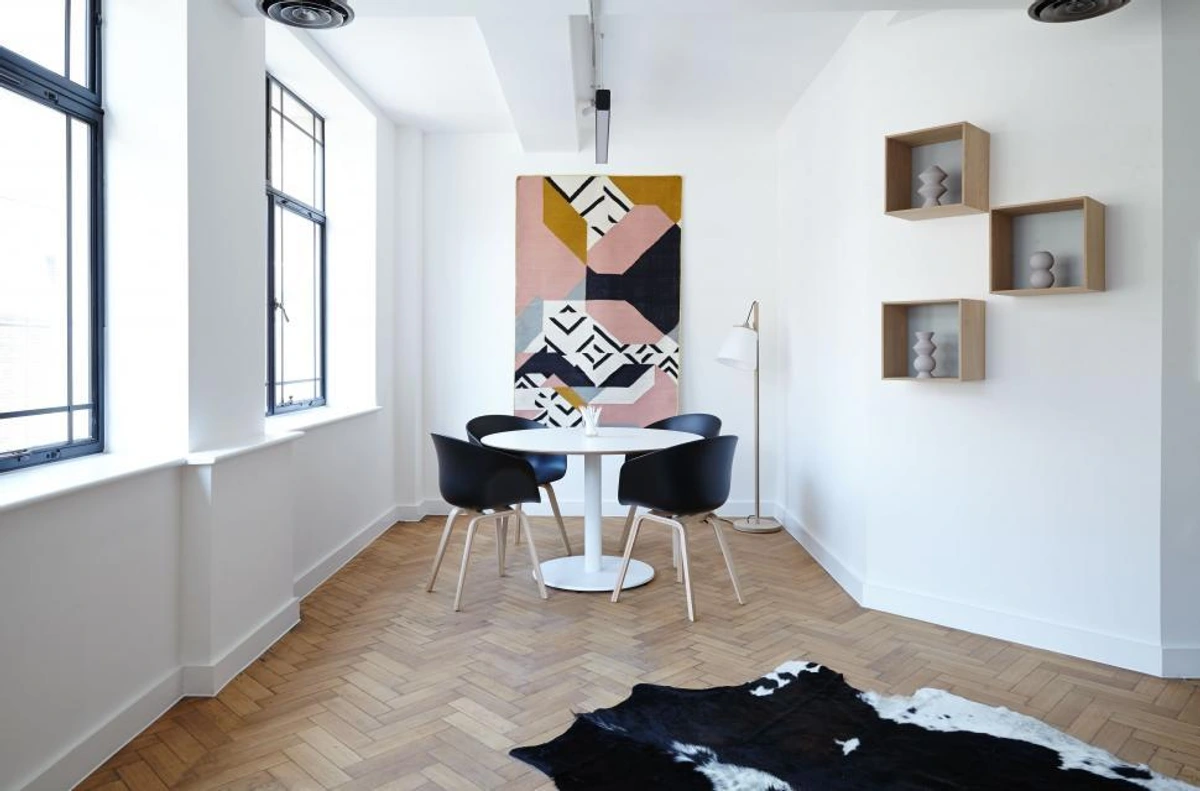
Beyond individual pieces, consider how you might curate your collection over time. Your taste, your needs, and your life evolve, and your art can reflect that. Think of your walls as a dynamic narrative, rather than a static display. What story do you want them to tell about you, and what emotions do you want them to foster day after day? The most impactful art is always the art that speaks directly to you. Are you ready to start consciously curating your emotional landscape?
Your Artistic Sanctuary Toolkit: Final Whispers for Your Walls
Before you dive deeper, here are the most important things I hope you take away from this guide – a little toolkit for crafting your personal artistic sanctuary:
- Your intuition is your best guide: Forget trends and external opinions. Choose art that feels right, that sparks a genuine connection deep within you.
- Art is a conversation for your soul: Remember, it's a non-verbal language that profoundly impacts your emotions, often bypassing conscious thought. What is your art telling you today?
- Texture, color, and form are your expressive tools: Understand how these elements – from the thick swipe of impasto to the calming sweep of a blue hue, or the dynamic energy of a diagonal line – create different moods and experiences in your space.
- Mindful engagement transforms: Whether you’re creating or simply observing, taking a few quiet moments to truly see art can be a powerful form of self-care and meditation. It’s a pause for your soul.
- Embrace the full emotional spectrum: Don't shy away from art that challenges or evokes complex feelings; these can be profound opportunities for growth, resilience, and deeper self-understanding.
- Curate your space intentionally with balance: Match art to the room's function, play with lighting and thoughtful placement, and always choose pieces that reflect your unique journey and narrative, ensuring a harmonious emotional tone throughout your home. Your home, your story.
More Than Just Decoration: It's Self-Care (and Collective Well-being)
Ultimately, integrating art thoughtfully into your home isn’t about impressing guests or adhering to some rigid design dogma. It’s a profound act of self-care, about nurturing your own mental landscape. It’s about consciously creating an environment that supports you, calms you, inspires you, and even challenges you in a gentle, growth-oriented way. It’s building a sanctuary where you can truly thrive. And remember, this impact extends beyond our private walls. Think about how art in public spaces – a vibrant mural transforming a drab city wall, a calming sculpture offering respite in a busy hospital lobby, or inspiring installations fostering creativity in a workplace – can subtly uplift and connect entire communities. It helps foster a sense of shared identity, pride, and collective well-being, proving that the power of art, it seems, knows no bounds.
So, what kind of whisper does your soul need today? Ready to find the piece that truly speaks to you? If you're looking for pieces that embody this kind of depth and emotional resonance, I invite you to take a look at the art I have for sale. Who knows, you might just find that perfect piece to start your own quiet revolution on your walls.
Frequently Asked Questions About Art & Mental Well-being
Q: How do I choose art if I'm not sure what I like?
A: Start by observing how different pieces make you feel, not just what you 'think' about them. Browse online galleries, visit local exhibitions, or even just pay attention to art in public spaces. Notice colors you're drawn to, or forms that feel comforting and intriguing, even if you don't know the artist or movement. Think about what emotions are sparked. Try creating a 'mood board' – digital or physical – of images, colors, and art pieces that instinctively draw you in. Over time, patterns will emerge, revealing your unique aesthetic and emotional needs. You might find a natural affinity for vibrant abstract art if you seek energy, or minimalist landscapes if you crave calm. Don’t worry about 'understanding' it; just focus on your emotional reaction. My Den Bosch Museum collection might give you some starting points for inspiration, showing a diverse range of styles and expressions.
Q: Can any type of art improve mental well-being?
A: Absolutely, but it’s highly personal and depends on your receptiveness! While serene landscapes or calming abstract pieces are often recommended for relaxation, even a vibrant, energetic piece can be profoundly beneficial if it sparks joy, creativity, or a sense of personal connection for you. For me, abstract art, with its freedom from literal representation, often allows for a particularly direct and unfiltered emotional response, making it incredibly powerful for mental well-being. The key is your authentic emotional response to the art, not its genre or typical interpretation. The artist's intent behind the creation can also play a role, but your personal connection remains paramount. It’s also worth noting that for some, certain art might be a trigger for negative emotions, and acknowledging this is a valid part of the experience, offering an opportunity for self-reflection rather than avoidance.
Q: Should all the art in my home be calming?
A: Not necessarily! Different rooms serve different purposes, and our emotions are complex. Your bedroom might benefit from calming art to promote rest, but your workspace or a creative corner could thrive with more stimulating, thought-provoking pieces that encourage focus or innovation. It's all about creating balance and matching the art's intended mood and function to each area. Embrace variety, just as you embrace the spectrum of your own feelings.
Q: What if a piece of art evokes uncomfortable or challenging emotions?
A: That's perfectly normal, and actually, it can be a profoundly valuable experience! As discussed earlier, art isn't always a lullaby. Sometimes, the most powerful pieces are those that stir difficult emotions or prompt deep introspection. If a piece evokes discomfort, try to sit with that feeling in a quiet, dedicated space. Use it as an opportunity for self-reflection. Ask yourself why it makes you feel that way. I vividly recall a period when I was grappling with some intense personal anxieties, and I was drawn to a chaotic, deeply textured abstract piece in muted, almost muddy colors. It wasn't 'pretty' by any stretch, but it felt incredibly honest. Sitting with it, letting its raw energy resonate with my own unease, paradoxically offered a sense of validation and allowed me to process those feelings in a safe, visual space. It wasn't an instant fix, but it was a crucial step in understanding myself better. Considering the artist's intent, if known, can sometimes offer valuable context or an alternative perspective. Engaging with such art in a safe, reflective space can be a powerful form of emotional processing, fostering resilience and a deeper understanding of your inner world. It's about acknowledging the full spectrum of human emotion, not just the 'easy' ones.
Q: Can art foster connection and conversation?
A: Absolutely! Art is a fantastic catalyst for dialogue, both within a household and with guests. A thought-provoking piece can spark discussions about its meaning, the emotions it evokes, or personal memories it brings to mind. It offers a shared point of interest, encouraging people to slow down, observe, and engage with each other on a deeper level. It transforms a room from merely a space into a place of shared experience and discovery.
Q: What about art's impact on children's well-being?
A: Art's impact on children is profound! Exposing children to diverse art forms from a young age can foster creativity, emotional intelligence, and critical thinking. Calming art can create serene spaces for rest and focus, while vibrant, imaginative pieces can spark curiosity and play. For younger children, tactile art like textured collages or finger painting can enhance sensory development. For older children, abstract art can encourage imaginative storytelling and non-linear thinking. Encouraging children to create their own art also provides an invaluable outlet for self-expression, helping them process emotions and develop a sense of accomplishment. It's truly a foundational tool for their emotional and cognitive development.
Q: Does expensive art have a greater impact on well-being?
A: Not at all, and please don't fall for that myth. The price of art has no bearing whatsoever on its emotional or psychological impact. A print, a photograph, or even a piece you found at a local fair that deeply moves you can be just as, if not more, beneficial than an original masterpiece you feel indifferent about. True value lies in the connection, not the cost.
Q: How can I integrate new art into a home with an existing decor style without it feeling out of place?
A: The trick is to think of integration, not replacement. Start by identifying the dominant color palettes, textures, and lines in your current decor. Then, look for art that either complements these elements (e.g., similar hues, harmonious forms) or provides a thoughtful, deliberate contrast that adds interest without clashing. For example, if your decor is very minimalist and neutral, a vibrant, textured abstract piece can act as a powerful, intentional focal point that adds personality and depth without overwhelming the space. Considering the texture and material of both the art (e.g., a smooth, glossy print vs. a heavily textured oil painting) and your decor (e.g., rough linen vs. polished metal) can also help create harmonious or deliberately contrasting pairings. Sometimes, a single bold piece can serve as an intentional focal point, rather than trying to blend in. Framing, as we discussed, also plays a huge role in bridging styles. The goal is to create a dialogue between your existing pieces and new additions, making each feel like a considered part of the whole narrative.
Q: Can art collecting itself be a therapeutic hobby?
A: Absolutely! Beyond the visual appreciation, the act of collecting art can be a deeply rewarding and therapeutic endeavor. It involves research, discovery, the thrill of the hunt for a unique piece, connection with artists and galleries, and the joy of nurturing a growing collection that reflects your evolving taste and journey. For me, the mindful process of seeking out pieces that genuinely speak to me, even if they're small or by lesser-known artists, has been a quiet anchor in my life – a way to continuously engage with beauty and personal meaning. The process of curating a collection, learning about different artists and movements, and finding pieces that resonate with your personal story can provide focus, a sense of purpose, and a wonderful way to engage with the art world. It’s a form of mindful curation that continuously brings new perspectives and beauty into your life, fostering a sense of accomplishment and connection.
Q: Can art evoke feelings of memory or nostalgia?
A: Indeed! Art has a remarkable ability to tap into our memories and evoke strong feelings of nostalgia. A particular landscape painting might remind you of a beloved childhood vacation spot, or a color palette could bring back the warmth of a grandparent's home. Abstract art, without literal representation, can be even more powerful in this regard, as its ambiguity allows your mind to project personal narratives onto it, evoking nostalgia not just for specific events, but for feelings or states of being – a sense of calm from a past moment, or the vibrant energy of a forgotten experience. I often find this with certain geometric abstract pieces; a specific arrangement of colors and lines might inexplicably transport me back to the vivid patterns of a childhood quilt, or the feeling of playful curiosity from a long-forgotten afternoon. These connections to our past, whether joyful or bittersweet, can be incredibly validating and provide a sense of continuity and comfort, reinforcing our identity and personal history within our living spaces.
Q: How is art for well-being different from art purely for decoration?
A: That’s a wonderful distinction to make, and it cuts to the heart of this article! Art for pure decoration often focuses on aesthetics that complement existing decor – matching colors, filling empty spaces, or following trends. Its primary goal is visual harmony and pleasing superficiality. Art for well-being, however, goes deeper. While it can (and should) be aesthetically pleasing, its core purpose is to evoke specific emotions, foster introspection, inspire, or provide comfort and calm. It’s chosen for its impact on your inner landscape, not just its look within the room. It demands a more mindful and personal selection process, prioritizing the emotional connection and the art's power to nurture your spirit over mere stylistic conformity. Often, art chosen for well-being becomes the anchor of a room's emotional tone, rather than just a decorative accent.
Q: How can I create a cohesive gallery wall with diverse art pieces?
A: Ah, the gallery wall – a beautiful puzzle! The trick is to find common threads even among diverse pieces. Start by selecting a unifying element: perhaps a consistent frame color or style (even if the art inside varies), a dominant color palette that subtly ties pieces together, or a shared theme (e.g., all landscapes, all abstracts, or all pieces that evoke 'calm'). Lay out your chosen pieces on the floor first to experiment with arrangements, creating a visual flow that feels balanced, whether symmetrical or intentionally asymmetrical. Leave consistent spacing between frames to give each piece breathing room and to create a sense of order. Don't be afraid to mix different sizes, mediums, and styles – a small, delicate watercolor can look stunning next to a bold abstract if the overall arrangement feels considered. Think of it as telling a multi-faceted story about your tastes and experiences, where each piece contributes to the overall narrative of your personal sanctuary.




